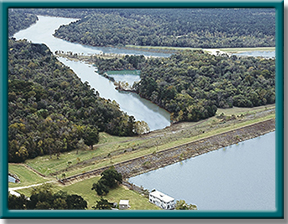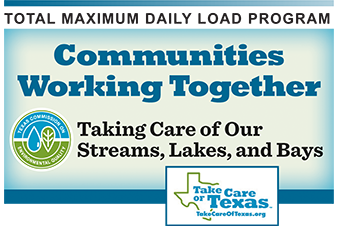San Jacinto River Tidal
County: Harris
Parameter: Legacy pollutants in fish tissue
River Basin: San Jacinto River
Segment: 1001, 1005
On this page:
Project Description and Goal
In 2001, the Texas Department of State Health Services (DSHS) issued a notice advising consumers to limit their consumption of fish caught in the river. DSHS had determined that there was an unacceptable risk to human health due to elevated concentrations of organochlorine pesticides, PCBs, and dioxin in fish tissue.
The advisory covered areas within two river segments:
- Segment 1001, San Jacinto River Tidal
The portion of the segment below the U.S. Highway 90 bridge. - Segment 1005, Houston Ship Channel / San Jacinto River Tidal
The portion of the segment above the Lynchburg Ferry crossing.
The fourteen pesticides identified in the advisory were all legacy pollutants. Legacy pollutants are chemicals that have been banned or severely restricted, but which persist in the environment. Because of their slow rate of decomposition, legacy pollutants frequently remain at elevated levels in the environment for many years after their widespread use has ended. Their concentrations naturally decline over a long period.
Status and Results
After studying the fish tissue data in more detail, both TCEQ and DSHS staff agreed that none of the legacy pesticides were present in concentrations that would pose a significant risk to consumers. DSHS subsequently rescinded its advisory for organochlorine pesticides in the two segments. The PCB and dioxin contamination in fish were addressed through other TCEQ projects.
Contact the TMDL Program
Please email tmdl@tceq.texas.gov and mention the San Jacinto River legacy pollutant project in the subject line. Or call us at 512-239-6682. See DSHS’s Seafood and Aquatic Life Group webpage for more information about fish consumption advisories and bans.





 Back to top
Back to top